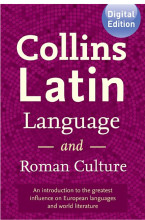The Psychology of Every Life: Love, Marriage, and the Baby Carriage - Families
6 important questions on The Psychology of Every Life: Love, Marriage, and the Baby Carriage - Families
What is a family?
What has recent U.S. Census data shown about married life in America?
Unmarried People in the United States in 2004:
- % Never married - % Divorced
- Men 25-29 - 53,6% - 5,1%
- Men 30-34 - 30,3% - 13,1%
- Men 35-39 - 20,2% - 20,7%
- Women 25-29 - 41,3% - 7,0%
- Women 30-34 - 22,3% - 17,1%
- Women 35-39 - 16,2% - 25,6%
How do family structures vary across cultures?
In many traditional cultures, the boundaries between the extended family and the nuclear family are much more diffuse. Multiple generations often live together in a single household and grandparents, uncles, and aunts play influential roles in the couple's marriage and in the rearing of their children.
- Higher grades + faster learning
- Never study anything twice
- 100% sure, 100% understanding
What is mean by the term family systems?
In other words, families are best understood as a dynamic whole - alsmost as living organisms - rather than as an unrelated pile of objects.
What is meant by boundaries in a family?
Boundaries refer to the lines between different family members or subsystems that mark the limits of influence, information, and decision-making power. For example, there needs to be a clear boundary between parents and children. Children do not need to know about the sex lives of their parents or the details of their financial situation. Moreover, children should not have undue influence on their parents' marriage.
What is the difference between rigid, firm, and permeable boundaries?
If the boundaries are too permeable, then there is insufficient respect for privacy and different family members inappropriately interfere with each other's decisions. This leads to an enmeshed family system.
Ultimately, firm but permeable boundaries are optimal. For example, parents should listen to the opinions and the preferences of their children, but still make the final decisions.
The question on the page originate from the summary of the following study material:
- A unique study and practice tool
- Never study anything twice again
- Get the grades you hope for
- 100% sure, 100% understanding
































